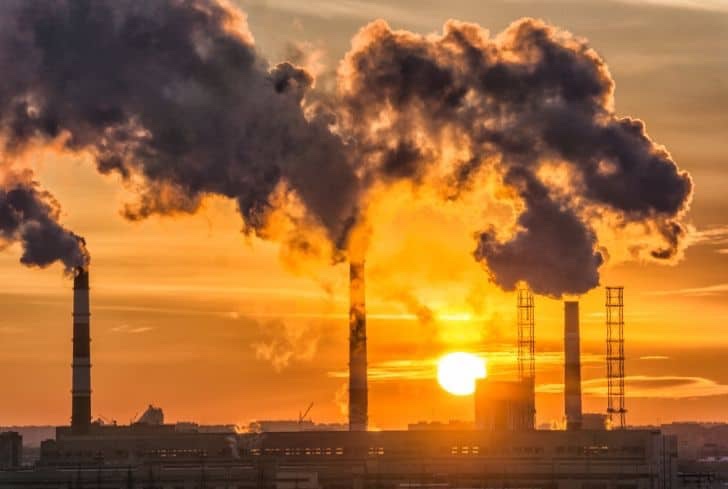Air pollution is a term we are all well acquainted with; however, oftentimes this concept is never considered deeply enough. According to NRDC, “Air pollution refers to the release of pollutants into the air that is detrimental to human health and the planet as a whole.” Whether it is from fossil fuel plants, mining sites, vehicles, or even cigarettes, this is a harmful truth and demeans the air we breathe day-to-day. This entity needed to survive might be slowly degrading our health.

What Are the Predominant Instigators of Air Pollution?
Most air pollution simply comes from energy use and production. Burning fossil fuels releases toxic gases and chemicals into the air. This is destructive and seemingly never-ending feedback loop that instigates and defines Climate Change. The two most notorious air pollutants that perpetually contribute to the Earth’s temperature increase are carbon dioxide and methane, which are direct derivatives of energy usage and production.
These outputs can lead to smog formation when mixed with atmospheric water vapor or sunlight. Photochemical (brown) and sulphuric (grey) smog are most frequently seen from different atmospheric combinations. Los Angeles, being a place of little humidity and immense sun exposure, is the best example of a region susceptible to Photochemical smog formation. London, on the other hand, is a biome of incessant humidity and cloud coverage making it ideal for sulphuric smog accumulation. Based on these climate patterns and chemical outputs, different types of toxins corrupts the air qualities and atmospheric integrity. Not only is Climate Change resulting from air pull toon, but there’s an increase in natural air pollutants as well. As temperatures increase, allergenic air pollutants subsequently become more apparent in the environment for longer periods of time. Mold, which thrives in the damp conditions caused by extreme weather and flooding, and pollen, due to a longer production season, also contribute to atmospheric strife as particulate and chemical entities.
Particulate Matter
According to the EPA, “An extensive body of scientific evidence shows that long- and short-term exposures to fine particle pollution, also known as fine particulate matter (PM2.5), can cause premature death and harmful effects on the cardiovascular system, including increased hospital admissions and emergency department visits for heart attacks and strokes.” Although particle pollution and ground-level ozone pollution have decreased significantly, levels are still unhealthy and have been tracked to cause respiratory issues/diseases. Ozone, a colorless gas, is created when emissions of nitrogen oxides and volatile organic compounds react, which can increase the occurrence of asthma attacks and premature respiratory problems. Particulate matter, directly resulting from sulfur dioxide or nitrogen oxides can accumulate in the atmosphere causing acid rainstorms , or even directly interfere with individuals’ health.
Sources:
“Air Pollution: Current and Future Challenges.” EPA, Environmental Protection Agency, 6 Nov. 2020, http://www.epa.gov/clean-air-act-overview/air-pollution-current-and-future-challenges.
November 01, 2016 Jillian Mackenzie. “Air Pollution: Everything You Need to Know.” NRDC, 4 Mar. 2021, http://www.nrdc.org/stories/air-pollution-everything-you-need-know.
RinkeshA true environmentalist by heart ❤️. Founded Conserve Energy Future with the sole motto of providing helpful information related to our rapidly depleting environment. Unless you strongly believe in Elon Musk‘s idea of making Mars as another habitab . “Various Causes, Effects and Impressive Solutions to Air Pollution.” Conserve Energy Future, 17 June 2020, http://www.conserve-energy-future.com/causes-effects-solutions-of-air-pollution.php.

Published by